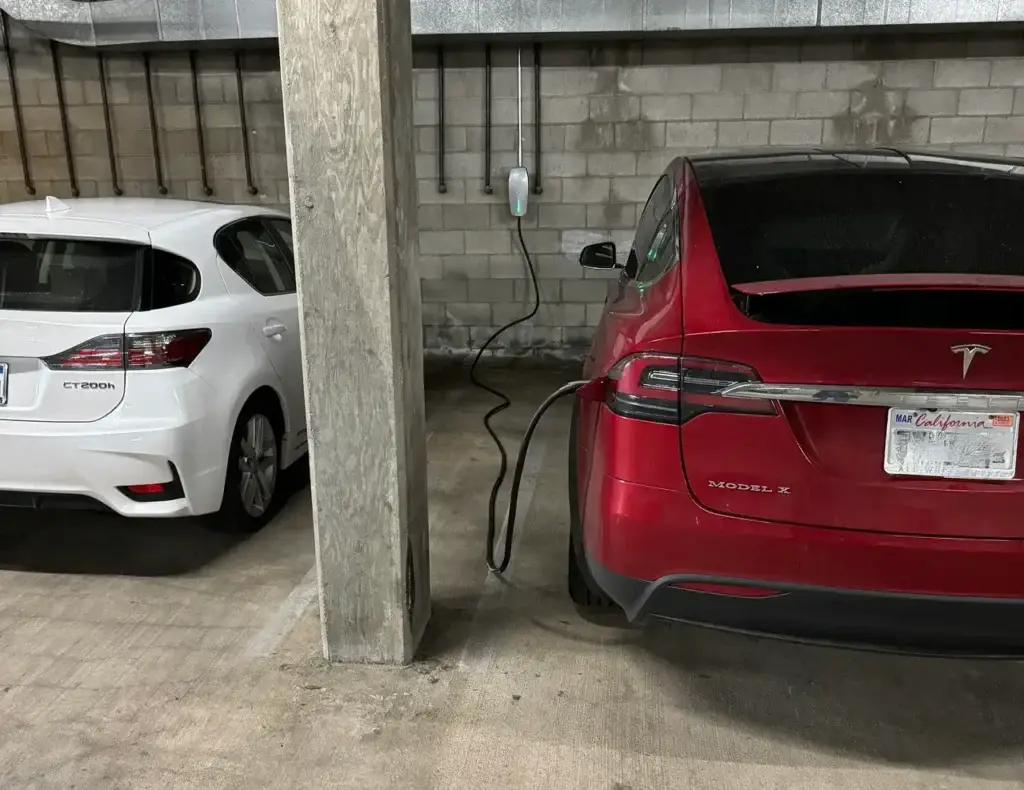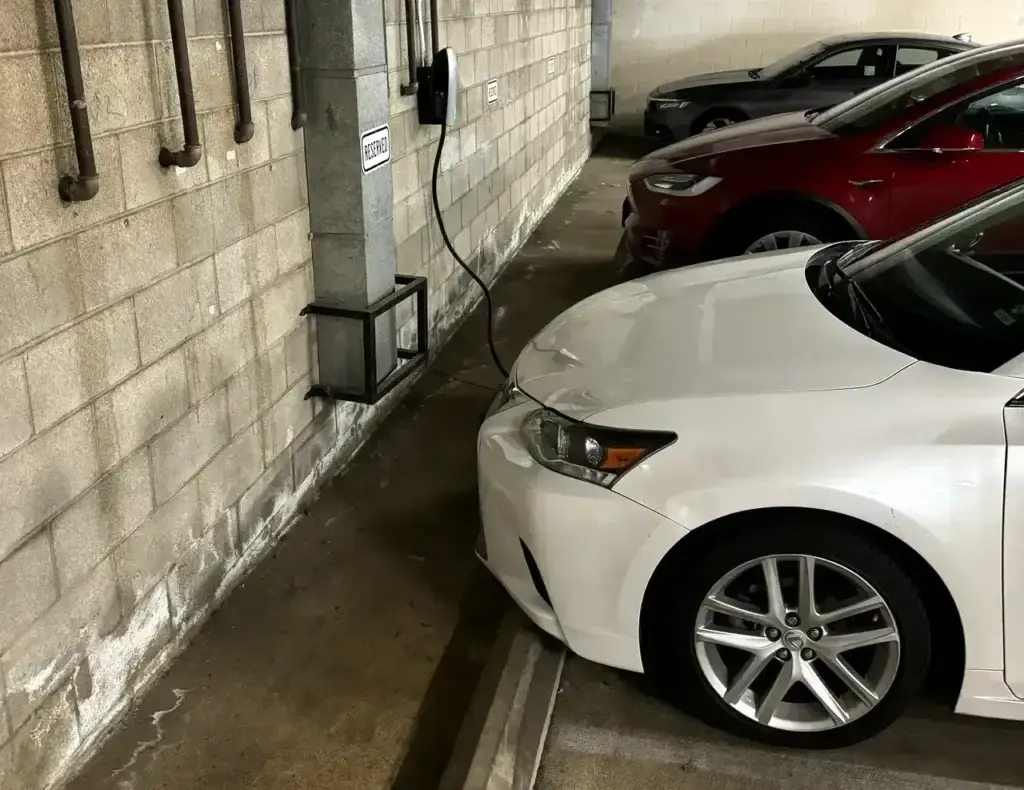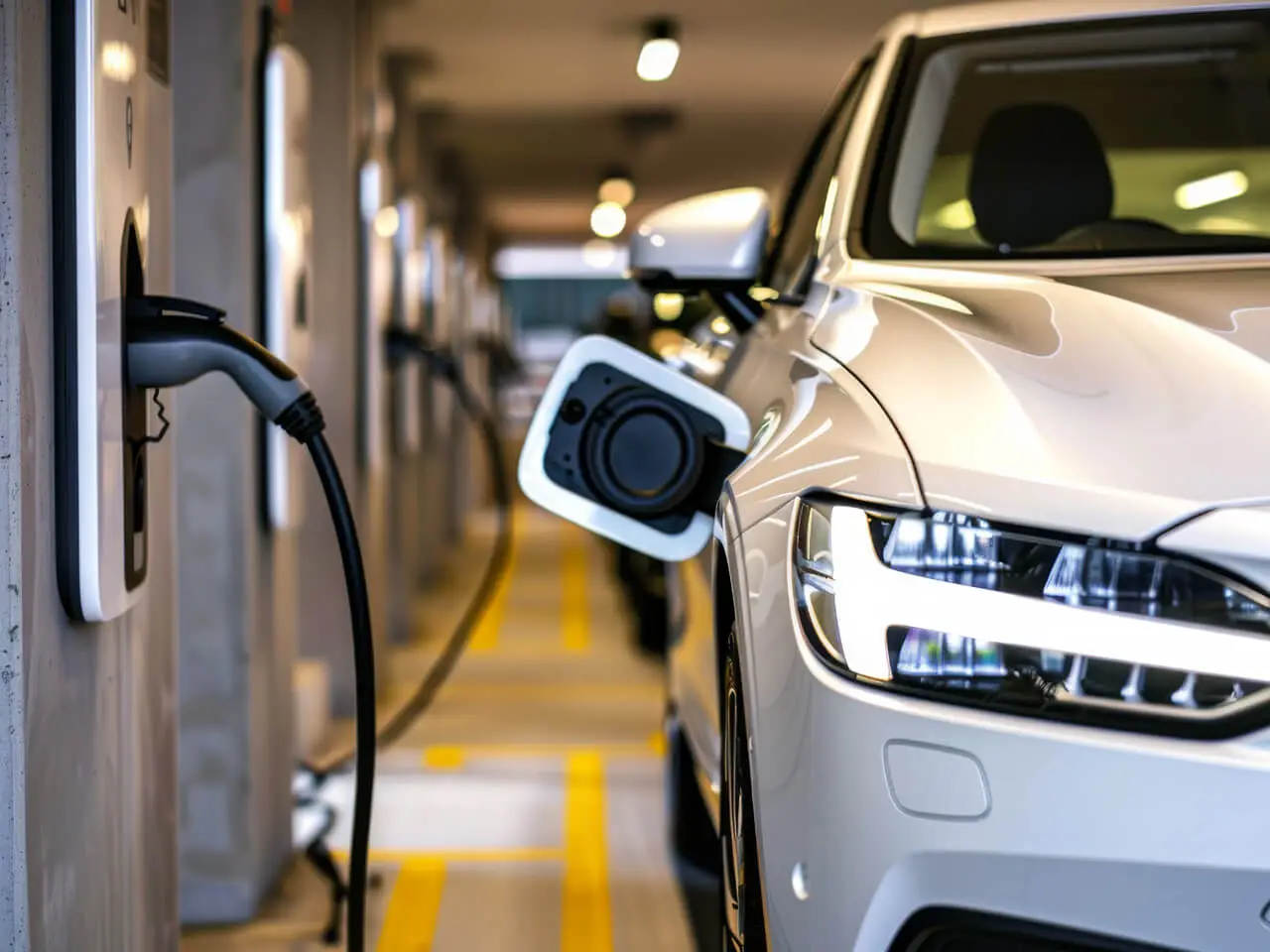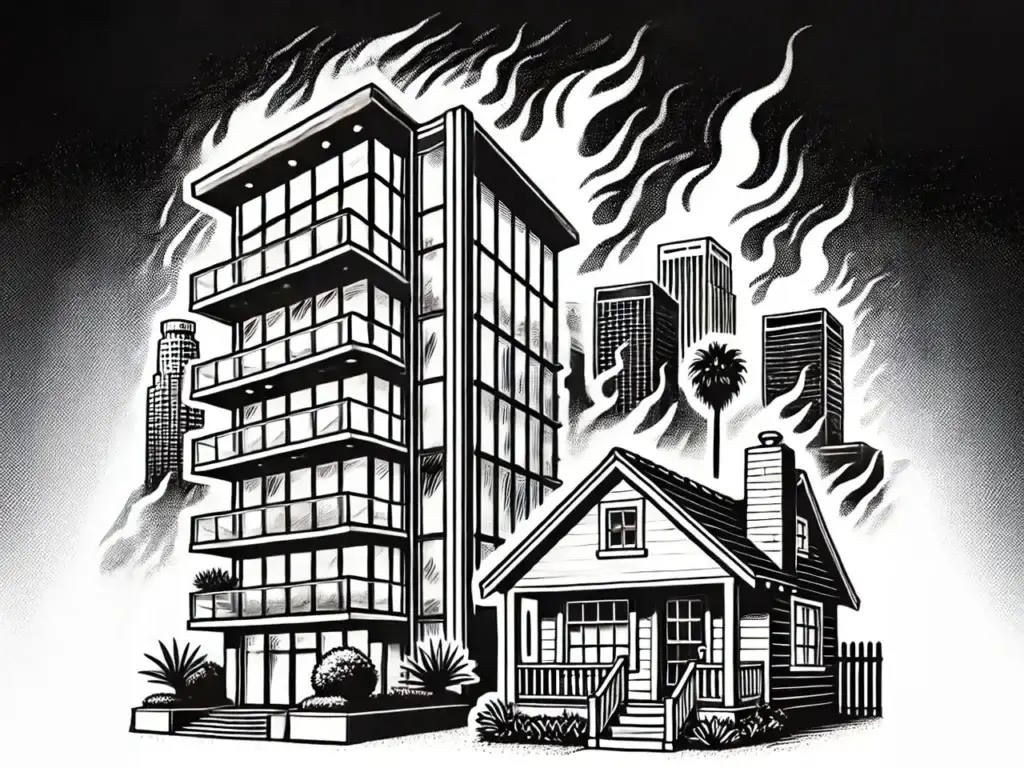Here’s how to challenge a bollard requirement for an electric vehicle (EV) charger installation, plus updates on electrical room safety and EV charging applications.
Challenging the Bollards Citation
In a previous CondoWonk adventure, the Los Angeles Department of Building and Safety (LADBS) inspector approved the electrical work for the installation of three EV chargers. But the inspector then slapped on a “correction” requiring a bollard or collar be added, citing a code requiring enclosures or guards “in locations where electrical equipment is likely to be exposed to physical damage.”
The citation was unreasonable. I escalated it to the inspector’s supervisor.
Obtaining the name and phone number of the supervisor was the hardest part, requiring patient navigation of the City of LA’s phone system. Name and phone number in hand, I called and left a voice message.
When the supervisor called back, he was extremely gracious. After listening to my concern, he gave me his email address and told me to send good photos.
I sent the photos that afternoon, along with text explaining why it was highly unlikely that the chargers would ever be hit by a car.


The next business day, I received the following email message:
Thank you for the great photos. All EV charger installations are case by case. Some of these installations do require a bollard or wall bracket for protection, however, I think in this situation, as you explained, added protection will not be necessary.
I will final the permits today.
Thank you, kind sir. Bottom line: Bollards are NOT a requirement for every location, and decisions are case by case.
Electrical Room Repairs
Between the fire and all the electricians who trooped through while we were figuring out how to do EV charging, we ended up with a lot of professional opinions about our electrical room. All said we needed to update our equipment.
Circuit breakers and busbars for the individual unit meters age over time. Our building was built in the mid 1980s and most of the equipment dated back to then.
The electricians who did our EV charger installations surveyed all the unit meters and submitted a proposal for repairs, including replacing loose circuit breakers and worn busbars. The board accepted the proposal and approved an emergency special assessment under Civil Code §5610 for an extraordinary expense “necessary to repair or maintain the common interest development or any part of it for which the association is responsible where a threat to personal safety on the property is discovered.”
Future Applications for EV Chargers
So far we have not received any new applications for EV charger installations, but we’re ready.
In addition to the basic requirements under Civ. Code § 4745(f)(1), our application form now requires the applicant to agree to use an electrician designated by the HOA to perform the work at the unit owner’s expense, following current HOA guidelines. At present, those guidelines permit running power from a unit meter with the installation to include a DCC-9 device.
The electrician must obtain an LADBS permit for the installation and pass final inspection.
The dedicated EV circuit is limited to no more than 40 amps. Amperage to the EV charger is 80% of the circuit, or a total of 32 amps. Unit owners can have one charging station for their two spaces.
The unit owner must pay for all costs associated with installing the charging station and pay for the electricity usage associated with the charging station.
Applicants also agree that the HOA may at any time “require further reduction of the amperage, installation of a different or additional load management system, relocation of parts of the charging system or other measures as needed to ensure safe and appropriate distribution of power within the building and access for other owners’ EV charging stations and agree to do so at our expense or designated share of the expense.”
Final Thoughts
Bollards are expensive and unwieldy and an unfair “gotcha” when added arbitrarily at the end of a code compliant electrical installation, especially in a state that is actively encouraging EV charger installation. Don’t be afraid to escalate to the LADBS supervisor with a thoughtful argument. And really good photos.








